Geology Reference
In-Depth Information
◗
Figure 3.7
A Variety of Mineral Crystal Shapes
Cubic crystals are typical of the
minerals halite and galena.
Pyritohedron crystals such as
those of pyrite have 12 sides.
Diamond has octahedral,
or eight-sided, crystals.
A prism terminated by a
pyramid is found in quartz.
a
c
b
d
the exterior manifestation of an ordered internal atomic ar-
rangement. Not all rigid substances are crystalline solids; nat-
ural and manufactured glass lack the ordered arrangement of
atoms and is said to be
amorphous
, meaning “without form.”
Minerals are, by defi nition, crystalline solids; however, crys-
talline solids do not always yield well-formed crystals. The
reason is that when crystals form, they may grow in proxim-
ity and form an interlocking mosaic in which individual crys-
tals are not apparent or easily discerned (
Figure 3.8).
So how do we know that the mineral in Figure 3.8b is ac-
tually crystalline? X-ray beams and light transmitted through
mineral crystals or crystalline solids behave in a predictable
◗
◗
Figure 3.8
Quartz and the Constancy of Interfacial Angles
Image not available due to copyright restrictions
Well-shaped crystal of smoky quartz.
a
120
°
120
°
120
°
120
°
120
°
120
°
Side views and cross sections of quartz crystals showing the constancy of interfacial angles. A
well-shaped crystal (left), a larger well-shaped crystal (middle), and a poorly shaped crystal (right). The
angles formed between equivalent crystal faces on different specimens of the same mineral are the
same regardless of size, shape, age, or geographic occurrence of the specimens.
c
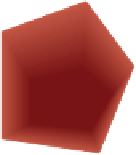
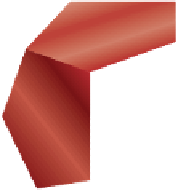























































































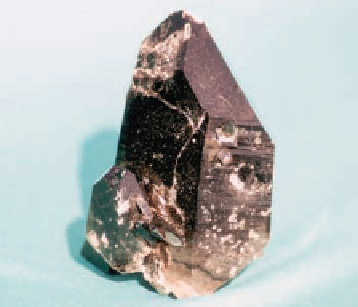







Search WWH ::

Custom Search